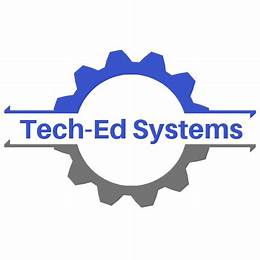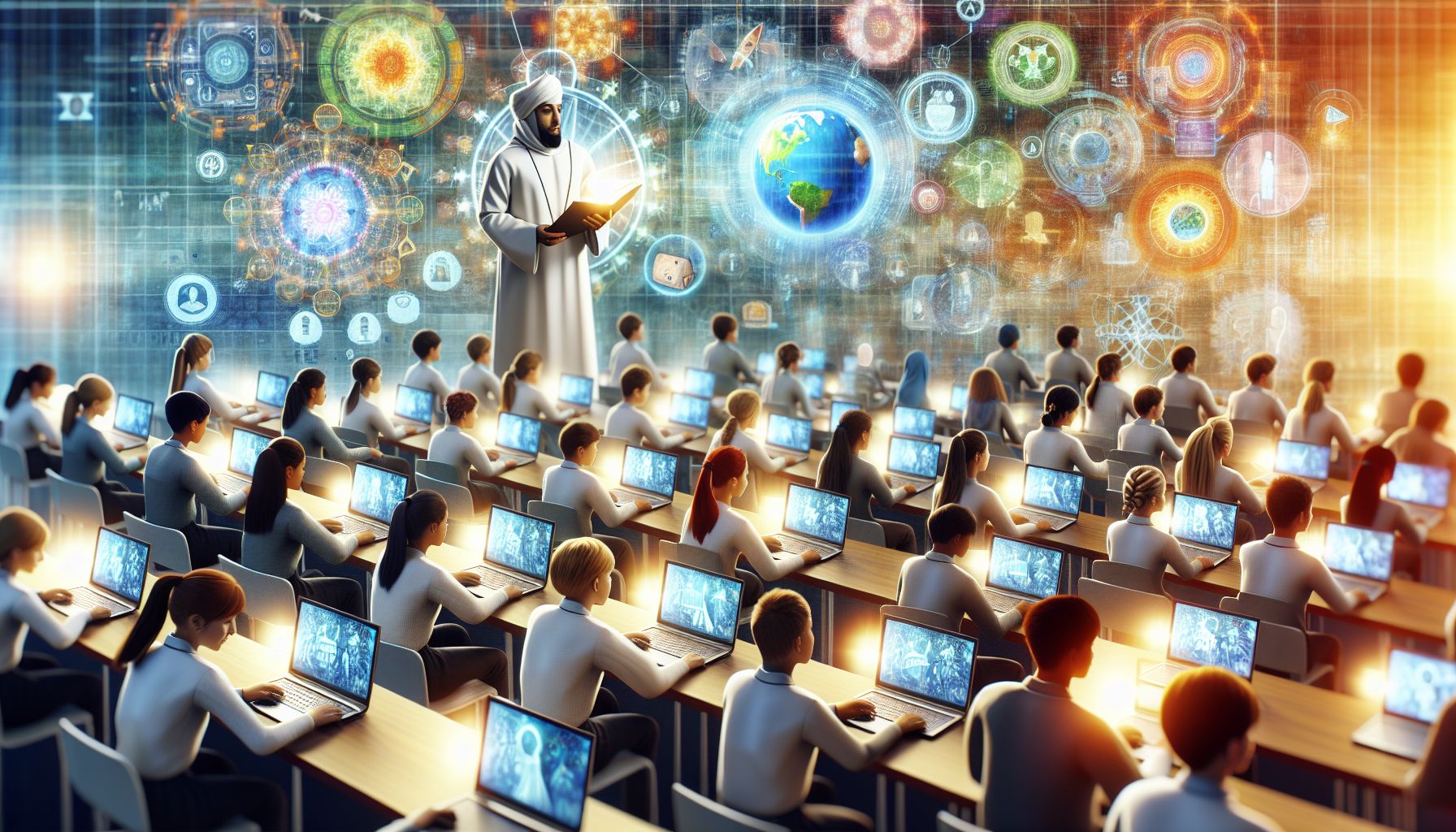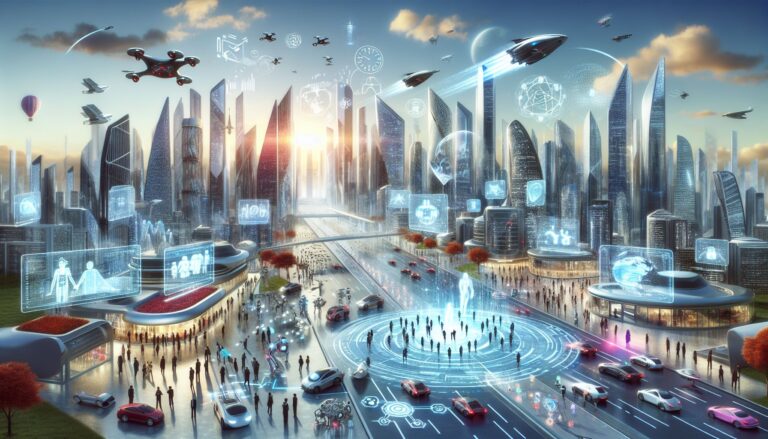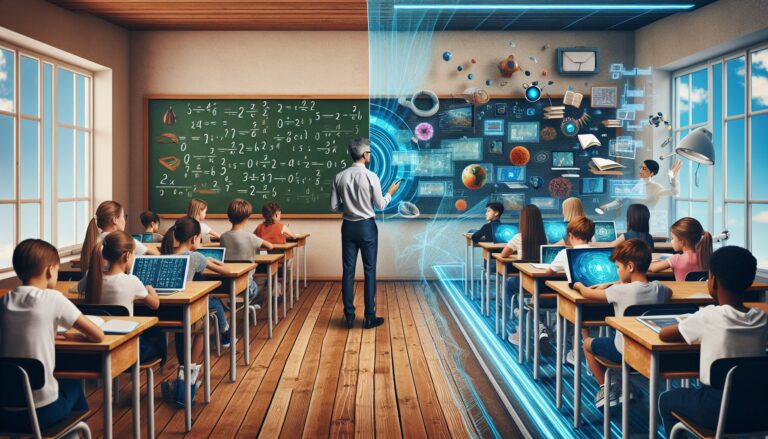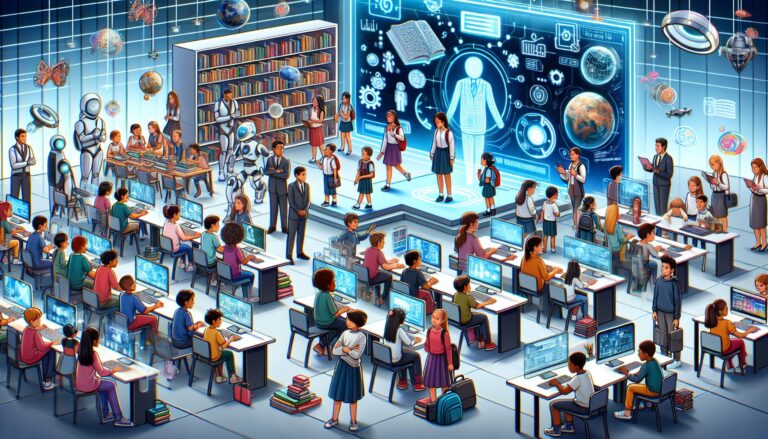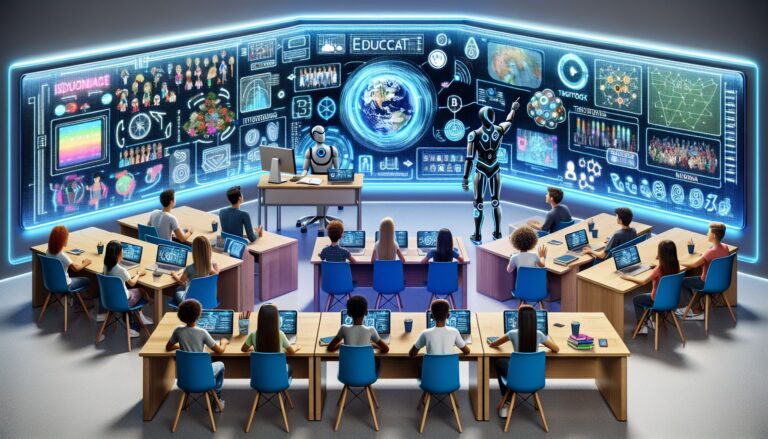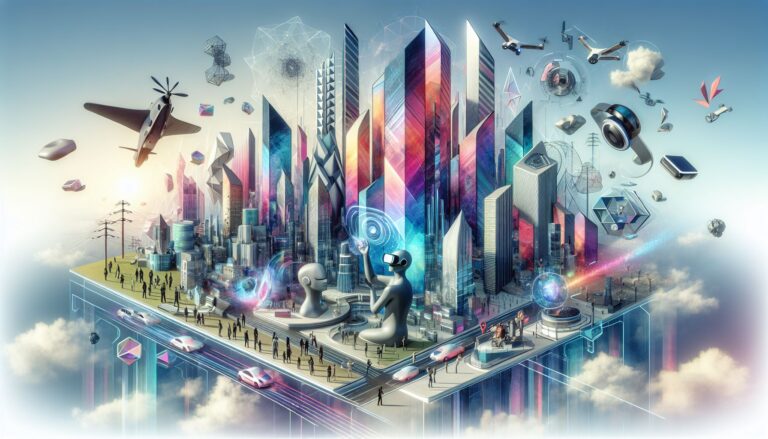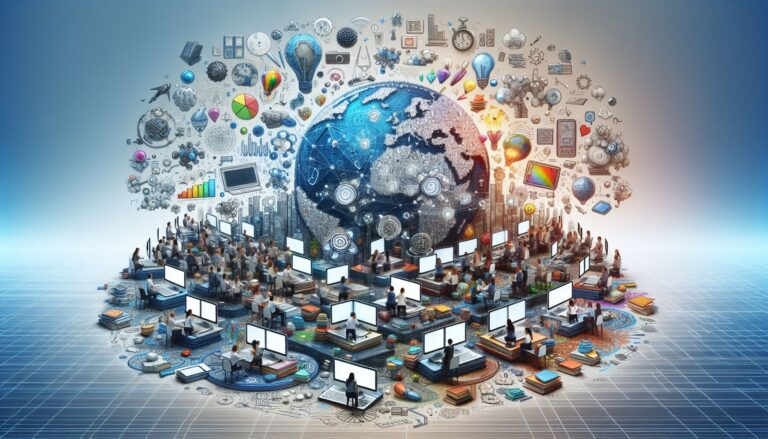The relentless voracity with which technology devours traditional practices and spawns innovative ways of existence is undeniable. Once-segregated industries are now interlinked as technology emerges as both the bridge and the destination. This is particularly evident in the realm of education where chalkboards and textbooks are continuously being supplemented, if not replaced, by their digital counterparts. The blueprint of education is being redrawn, and its future is no less than a marriage between human intellect and artificial intelligence.
The Digital Classroom: More Than Just a Trend
The transformation of education under the influence of technology is more than a fleeting trend; it’s a comprehensive revolution. Classrooms have evolved into dynamic ecosystems that thrive on interactive software, digital tools, and immersive experiences. Central to this change is the integration of devices such as tablets and laptops, which have made learning more accessible and personalized than ever before.
One notable methodology at the forefront is the flipped classroom model. Here, the traditional sequence of lecture followed by homework is inverted. Students first interact with new material outside of class, typically through online videos or modules, and then apply that knowledge in the classroom through collaborative projects and guided discussions. This approach leverages technology to facilitate an active learning environment where students take charge of their own educational journey while the teacher transforms into a guide rather than a broadcaster of information.
Digital gamification in education is another pioneering development, turning learning into an engaging, competitive, and fun activity. Utilizing game design elements in educational applications not only captures the interest of students but also enhances their motivation and concentration. It’s an enthralling way to master subjects that are traditionally viewed as tedious or complex.
 The Challenges and Benefits of Online Learning
The Challenges and Benefits of Online Learning
The rise of online learning platforms has democratized education, making it more accessible to people regardless of their geographical location. MOOCs (Massive Open Online Courses) offer a plethora of courses from prestigious institutions, breaking down geographical barriers and granting learners across the globe the opportunity for lifelong learning.
Yet, the online realm also comes with its own set of challenges. A striking digital divide exists, highlighting the disparity in access to the necessary devices and a reliable internet connection. Additionally, the absence of face-to-face interactions can impact soft skill development and reduce the immediate feedback loop that students often rely on.
The New Teacher-Student Paradigm
Another consideration of the digital foray into education is the changing nature of teacher-student interactions. As digital natives, students of this era anticipate and even expect instant results and feedback. This necessitates a shift in teaching strategies – from authority figures to facilitators who can adeptly navigate digital platforms and foster an environment where technology enhances the learning experience rather than distracting from it.
Looking Ahead: The Educational Landscape of Tomorrow
As we gaze into the educational horizon, it’s evident that technologies like artificial intelligence, virtual reality, and blockchain will play pivotal roles. Artificial intelligence can offer personalized learning experiences, virtual reality can provide immersive learning environments, and blockchain can ensure the security and verifiability of educational credentials.
The future holds a promise of an educational paradigm that’s simultaneously more individualized and more interconnected than ever. It’s a future where learning is a continuous process, embedded in every interaction and experience, and where the value of education is measured not just in diplomas but in the ability to think critically and adapt in an ever-changing world.
Technology in education is not merely a phase; it’s the scaffolding for an evolving landscape where learning is boundless, and the potential for innovation is limitless. It urges us to reimagine not just how we teach and learn, but also why we do it – to foster a world where education transcends the four walls of a classroom and becomes a lifelong crescendo of growth and enlightenment.
